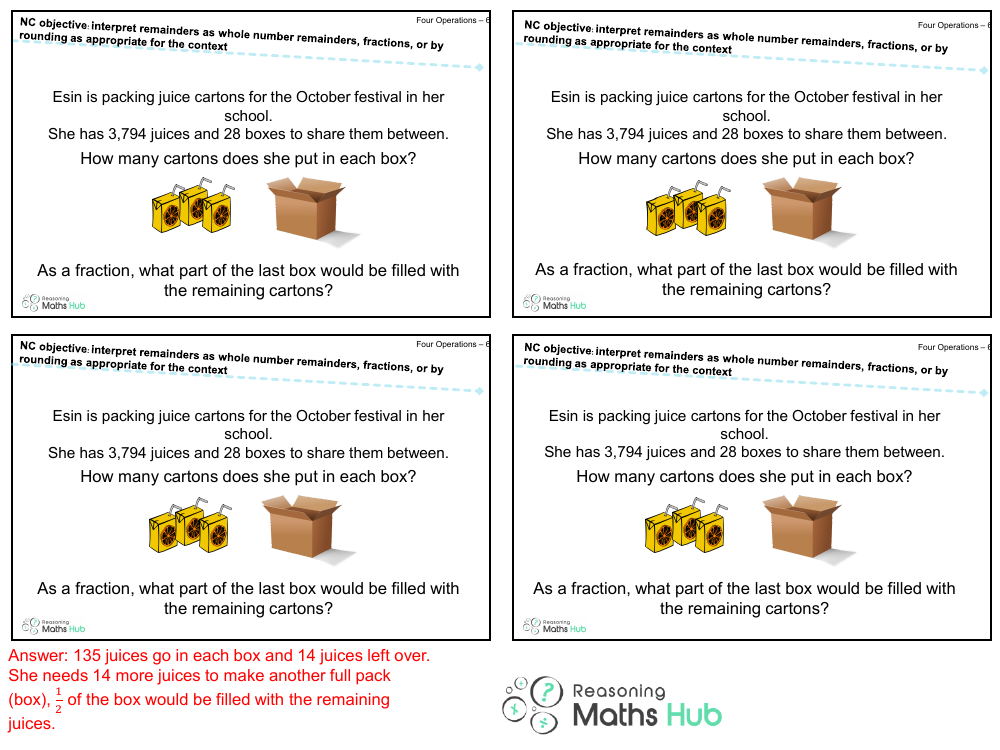Remainders as whole number remainders, fractions, or by rounding as appropriate for the context 2 - Reasoning

Maths Resource Description
Esin is faced with the task of evenly distributing 3,794 juice cartons into 28 boxes for the upcoming October festival at her school. To determine the number of cartons per box, she divides the total number of juices by the number of boxes. The calculation reveals that each box can be filled with 135 cartons, with 14 cartons left over after all the boxes have been packed. This remainder, while not enough to fill an entire box, would occupy a portion of the next potential box.
The fraction of the next box that the remaining 14 cartons would fill can be calculated by comparing it to the full capacity of a box, which is 135 cartons. By expressing the leftover cartons as a fraction of the full box capacity, it becomes clear that the 14 remaining cartons constitute \(\frac{14}{135}\) of a box. To make another full box, Esin would require an additional 14 cartons. In this context, the remainder is understood both as a whole number—14 cartons—and as a fraction of a box—\(\frac{14}{135}\) or approximately \(\frac{1}{10}\) when simplified and rounded appropriately.